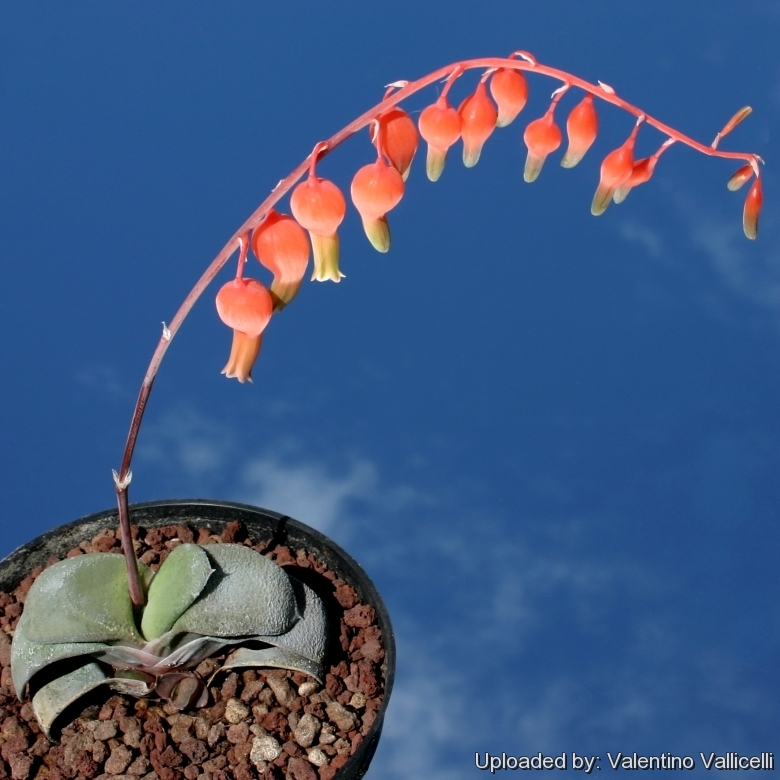
Gasteria glomerata Photo by: Valentino Vallicelli
Origin and Habitat: Endemic confined to the lower Kouga River, now part of the Kouga Dam. Southeastern Cape Province (South Africa)
Habitat: Gasteria glomerataSN|16659]]SN|16659]] grows in inhospitable rugged terrain and the plants occur on sheer, vertical, shady, south-facing rocky ledges (altitude 500–700 m), in minerally poor, slightly acid quartzitic sandstone soils with a ph of 6.4. The climate is hot in summer and mild in winter, with no frost. Annual rainfall of 300–400 mm occurs in summer and winter, but there is a tendency to winter dryness.
Synonyms:
Common Names include:
ENGLISH: Ox Tongue, Kouga Gasteria
Description: Gasteria glomerataSN|16659]]SN|16659]] is a distichous stemless succulent plant 1,5-4 cm tall, decumbent to erect. It's a profuse suckerer that forms rounded clusters 2–5(-8) cm large.
Leaves: Fat strap-shaped (lorate) to widely ovate, grey green or glaucous 15–25(50) mm long and 15–20(25) mm broad at the base, slight pebbly, stiff, more or less rough (tuberculate), the inner erectly spreading, the outer spreading (patent) or recurved, biconvex in cross section to almost rounded (terete), becoming flattened during the dry season. The leaves are disctichous or forms incomplete spiral around the stem. The leaf apex is truncate or rounded, bearing a mucro.
Flowers: The inflorescence consists of a spreading raceme, 120–200 mm long, bearing 8–20 hanging (pendent) flowers. The flowers are fleshy (typical gasteriform) but with more orange than most: small, dainty, ewer- shaped orange with green-brown tips (bicolour).
Fruits: Once pollinated, the capsule, 13–15 long, 6 mm wide, becomes erect. When mature they opens from the top to release the flattish seeds.
Seeds: Black, 2–3 long 1.5–2.0 mm wide
Blooming season: Spring.
Bibliography: Major references and further lectures:
1) Forest & Kim Starr “Gasteria glomerata (Ox tongue). Plants of Hawaii. <http://www.starrenvironmental.com>. Web. 3 feb. 2015.
2) Ernst J. Van Jaarsveld, Ellaphie Ward-Hilhorst “Gasterias of South Africa: a new revision of a major succulent group” National Botanical Institute (South Africa)
3) Van Jaarsveld, E.J. 1994. “Gasterias of South Africa” Fernwood Press, Cape Town
4) Urs Eggli “Illustrated Handbook of Succulent Plants: Monocotyledons” Springer, 2001
5) James Cullen, Sabina G. Knees, H. Suzanne Cubey “The European Garden Flora Flowering Plants: A Manual for the Identification of Plants Cultivated in Europe, Both Out-of-Doors and Under Glass” Cambridge University Press, 11/Aug/2011
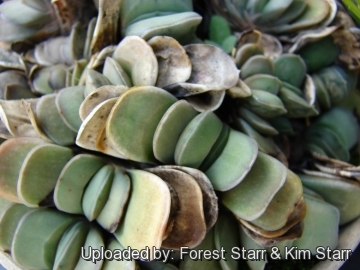 Habit at Upper Kimo Rd Kula, Maui, Hawaii, (USA). March 04, 2008. Photo by: Forest Starr & Kim Starr
Habit at Upper Kimo Rd Kula, Maui, Hawaii, (USA). March 04, 2008. Photo by: Forest Starr & Kim Starr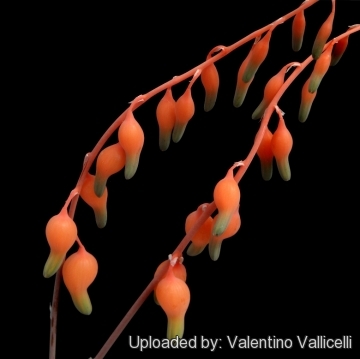 Gasteria glomerata Photo by: Valentino Vallicelli
Gasteria glomerata Photo by: Valentino Vallicelli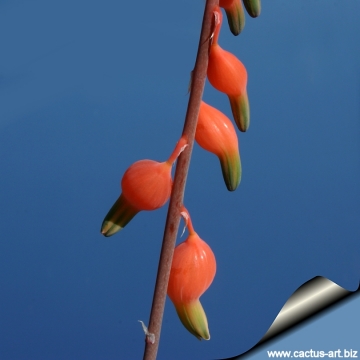 Gasteria glomerata Photo by: Cactus Art
Gasteria glomerata Photo by: Cactus Art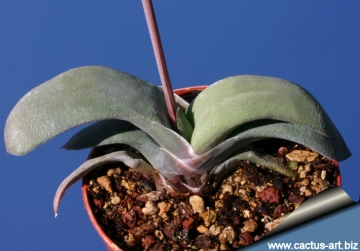 Gasteria glomerata Photo by: Cactus Art
Gasteria glomerata Photo by: Cactus Art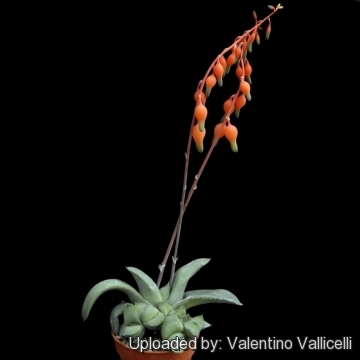 Gasteria glomerata Photo by: Valentino Vallicelli
Gasteria glomerata Photo by: Valentino Vallicelli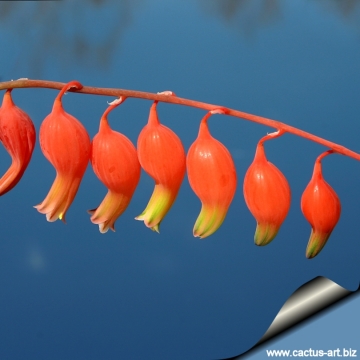 Gasteria glomerata Photo by: Cactus Art
Gasteria glomerata Photo by: Cactus Art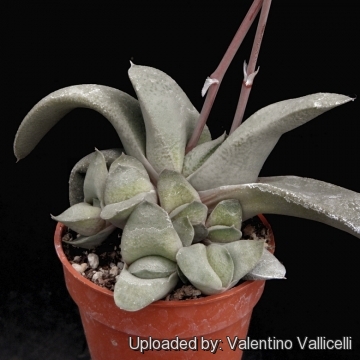 Gasteria glomerata Photo by: Valentino Vallicelli
Gasteria glomerata Photo by: Valentino Vallicelli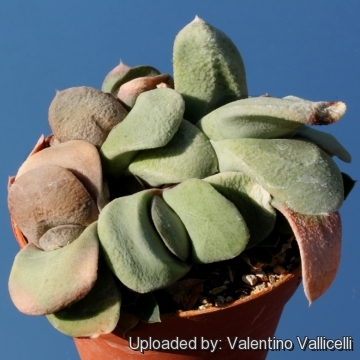 Gasteria glomerata Photo by: Valentino Vallicelli
Gasteria glomerata Photo by: Valentino VallicelliCultivation and Propagation: It is a slow growing, but long-lived and easy species. Can be cultivated in the ground (in warm climate) or in a container. The seedlings are slow growing and can be planted out in small containers when they are large enough to handle. The soil should preferably be very porous potting mix to increase drainage. Needs light shade to shade, but If slowly acclimated, it can take a good deal of sun. One of the more resistant Gasteria to fungal leaf spot- relatively easily plant to keep good looking. Watering Needs: Moderate water in summer, keep on the dry side in winter. The plants are fertilized only once during the growing season with a balanced fertilizer diluted to ½ the recommended strength.
Propagation: Gasteria is easily propagated by the removal of offshoots or by leaf cuttings in spring or summer. To propagate by leaf cuttings, remove a leaf and let it lie for about one month, giving the wound time to heal. Leaf cuttings should first be allowed to dry and heal by placing them on a cool windowsill for at least three weeks. The basal part should preferably be treated with a fungicide. Plant the leaves in an erect position or lying on their side in sandy soil. Rooting is rapid and young plants can be harvested the following season. Seed should be sown during spring or summer in sandy, well-drained soil, and protected from full sun. They can also grown from seed. Plants are easily pollinated by using a matchstick to transfer pollen from one plant to the ripe stigma of another. If fertilization does not take place, the flower will abort.



















